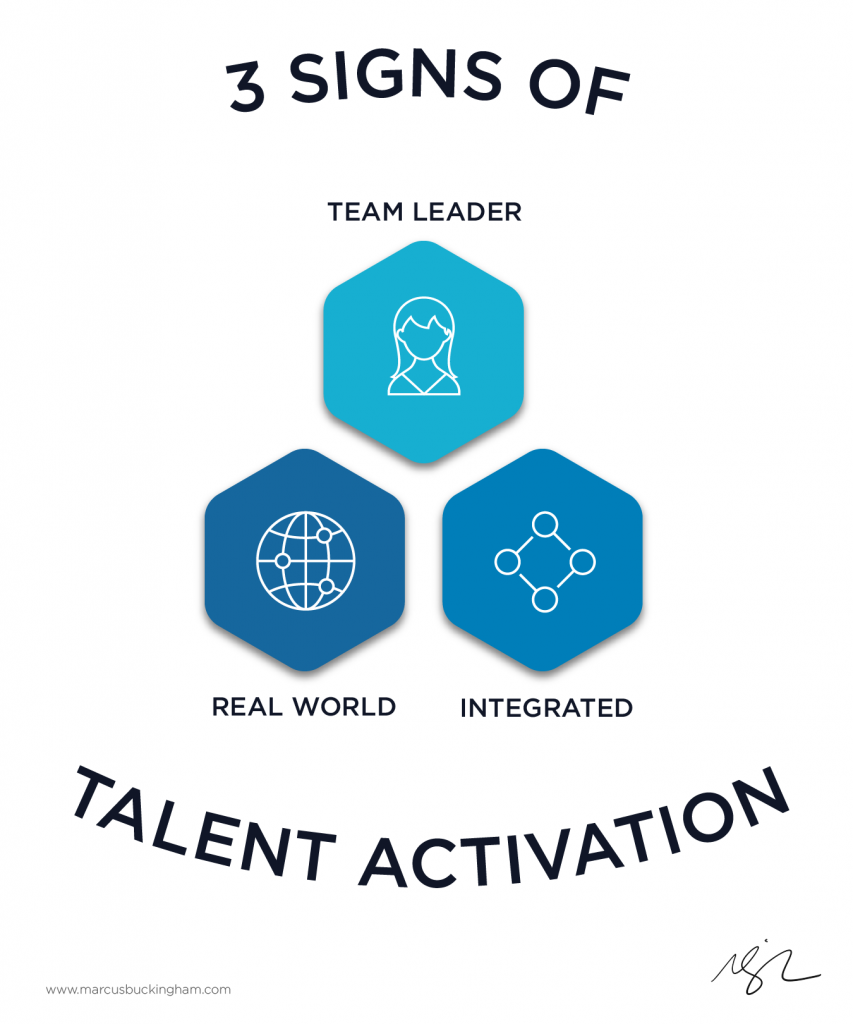3 Signs You’re Doing Talent Activation Right
Engagement surveys, competency models, leadership development programs – there’s no end to the amount of tools your HR leaders can provide you with. But how do you know that they are actually making your people better? Is your #TalentActivation tool actually working? Share on X
There are three criteria to knowing if you are doing talent activation right:
- It starts with the team leader.
Talent activation happens on a team, between a team leader and a team member. So if your tools aren’t built for the team leader’s willing, voluntary usage, they will most likely fail. If you have an effective tool, you will not need to coerce your team leaders into using it – it will come naturally to them.
- It’s in the real world.
Many initiatives in the talent activation space use theoretical models, involving theoretical people, in theoretical structures. Look at competency models, for example: we list out numerous criteria that the “perfect” person should have, when this “perfect” person does not exist. Why measure a real person against a theoretical person? Any effective talent activation initiative will involve real people, real time, and real work. #TalentActivation tools don't measure real people against theoretical competencies. Share on X
- It’s integrated.
These numerous HR systems must talk to each other. Your busy team leaders can’t be asked to integrate all of the different tools, languages, and systems – they just won’t do it. The team leader’s challenge isn’t to integrate HR tools, it’s to turn their team member’s talents into performance. Anything less than that is a waste of time.
Many companies do have talent activation tools – but when looking at these three criteria, it’s clear why most companies still aren’t doing talent activation right. Here's how to do #TalentActivation right. Share on X

